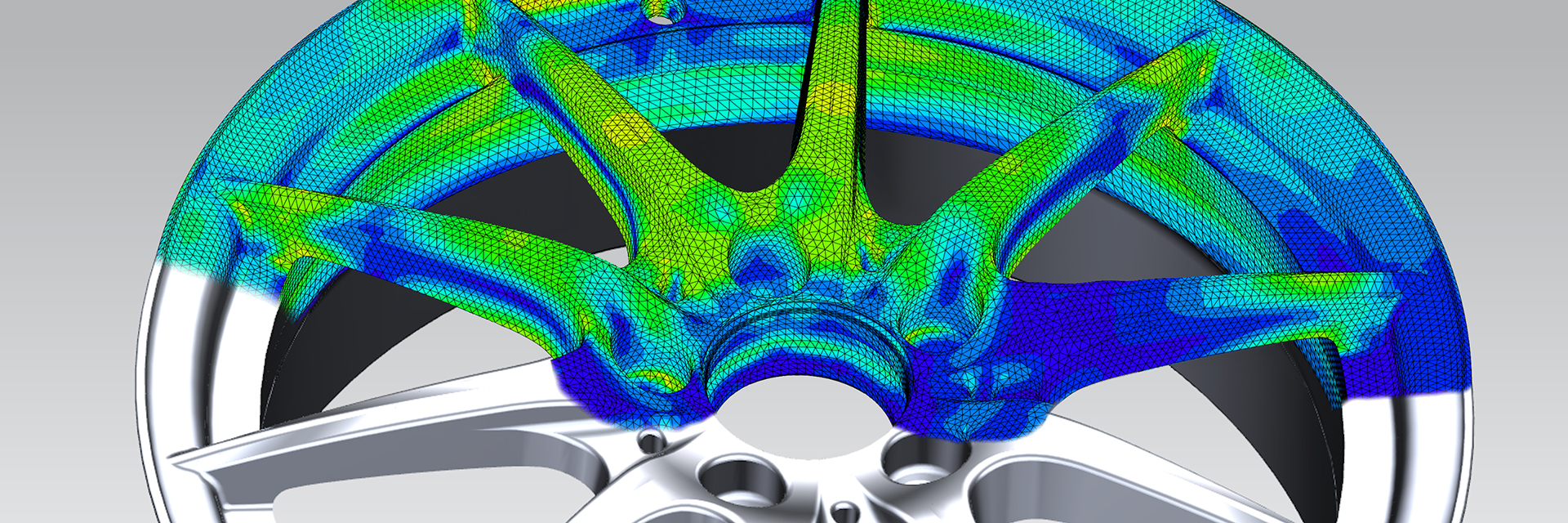Additive Manufacturing
3D printing of metal and plastic components, including manufacturing-specific design.
Additive manufacturing refers to generative methods with which physical parts are directly manufactured from 3D CAD models. For a long time, the mechanical design of components was severely limited due to the traditional production methods available. With the emergence of generative production methods, it is now possible to manufacture parts with highly complex forms economically, or indeed to do so at all.

Airbus A350 XWB bracket (source: www.airbus.com)
The Institute of Product and Production Engineering has the following methods at its disposal:
Selective laser melting is the most successful production method in metallic 3D printing. The IPPE boasts extensive know-how for the entire development cycle of SLM components, from design to simulation, production to material characterisation, right through to validation.

Manufacturing of turbine blades with SLM (source: General Electric)
The main advantages of SLM technology include:
- Highly complex geometries can be manufactured economically, or at all (“complexity for free”). This allows fundamental redesigns, which can also include improvements in the component's performance (e.g. increase in durability, weight reduction of an aircraft component)
- Reduction of the production steps and thus reduction of production cost (e.g. production of a five-part assembly as a single SLM component)
- No auxiliary tools
- Very easy manufacturing of individually tailored components.

Expansion of the design space and "complexity for free" through SLM
The Institute of Product and Production Engineering has an SLM machine of type Realizer SLM125. The dimensions of the machine's build volume are 125 x 125 x 200mm. The materials processed are nickel-based alloys (superalloys), as well as aluminium and steel.

SLM-produced injection nozzle of the LEAP aircraft engine from GE (weight reduction of 25%, reduction from 20 components to one; source: GE Aviation)
Contact: Prof. Dr. Kaspar Löffel, +41 56 202 85 64, kaspar.loeffel@fhnw.ch
At the FHNW University of Applied Sciences and Arts Northwestern Switzerland, small batches and prototypes are produced using a ProJet® MJP 3600 MAX system from the company 3DSystems in the poly-jet modelling method.

Here, liquid photopolymer is injected by printing heads (accuracy up to 750 DPI) in layers, and hardened by UV lamps. At the same time, a waxy support material is built up. This is simply melted out in a furnace after the production process.

Poly-jet modelling (source: Objet)
The maximum component size is 298 x 183 x 203mm. Larger components are divided up and glued together into a single piece after printing.
Materials in various colours and qualities are available. Models for precision casting (lost form) can also be produced.
The mechanical properties of the components produced also allow subsequent machining (e.g. tapping, milling, turning and grinding).
Contact: rapid.ippe.technik@fhnw.ch
In additive production methods, production is not carried out by removing material from a solid body, as in milling, but by adding material, i.e. additively. This means that components are created in layers by adding raw material, or by transforming a material from liquid or powder form to a solid state. No moulds or tools are used in production.
Process flow
In the additive manufacturing process, ready-to-use components are created in the material required on the basis of 3D CAD data. Depending on the method, however, it may be necessary to perform mechanical finishing, remove supporting structures and/or clean the parts after they are removed from the additive production system.
Classification of additive production methods
With the growing number of different AM technologies, selecting the right method is becoming increasingly difficult. The component quality often plays a significant role, depending on whether the products are finished parts, small batches or prototypes.
Below, the most important AM methods at present are classified by the type of material as it is inserted into the machine. For metallic 3D printing, only metal powder is used at the moment. For plastics, there are other possibilities, such as a thermoplastic wire, which is melted in the FLM method.

